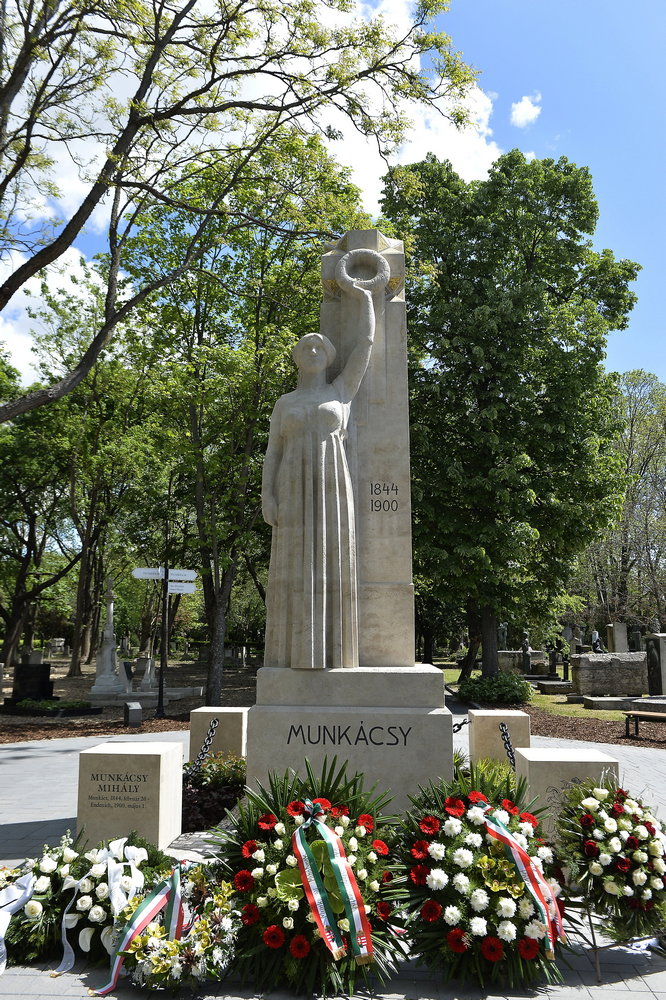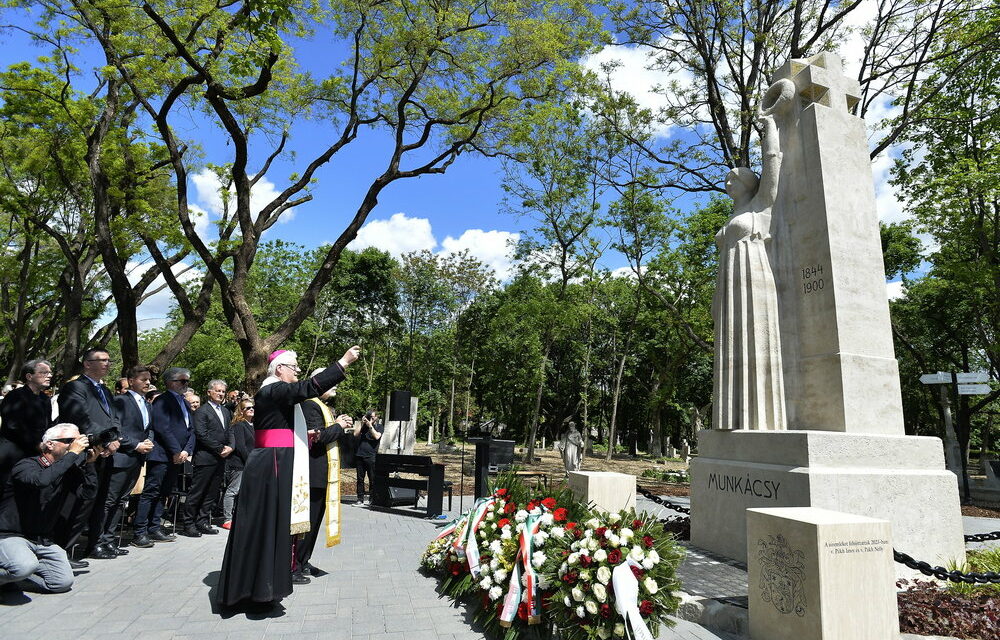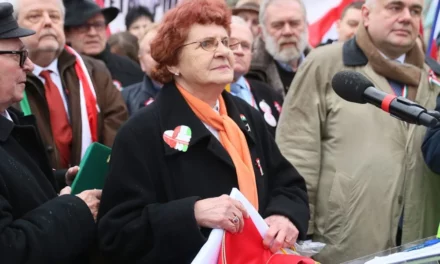The renovated tomb of Mihály Munkácsy was inaugurated on the occasion of the 123rd anniversary of the painter's death on Tuesday in the National Cemetery on Fiumei Street.
"Munkácsy had a difficult start to his career. With the determination and perseverance of those who came from the bottom, he looked for those 'model-creating' personalities who set in motion the pictorial thoughts and emotions latent in him", recalled Máté Vincze, Deputy Secretary of State for Public Collections and Cultural Developments of the Ministry of Culture and Innovation (KIM) in his opening speech.
Describing the painter's life, he said that after the death of his parents, he went to Békéscsaba Munkácsy with his maternal uncle, who gave him to a carpenter's apprentice after elementary school. He worked in Arad, where his first drawings were created, and the subject of his first highly successful picture, the butler Ásító, born in 1869, was also taken from the world of his previous craft.
He emphasized that
he painted his most monumental work in the 1880s, the first two parts of the Christ trilogy, Christ before Pilate and Golgotha, Ecce homo was completed only in 1895.
Together with the creator of the two giant paintings, he also sailed to America, where he received a welcome similar to Kossuthé.
Art historians call Munkácsy's style romantic realism, which was not significantly influenced by modern painting trends . His life's work is one of the top achievements of Hungarian art," emphasized Máté Vincze.
Mihály Munkácsy is an absolutely indispensable figure in Hungarian cultural history. There are few Hungarians born who are known worldwide, and few artists whose works were bought abroad during their lifetime - emphasized Gábor Móczár, Director General of the National Heritage Institute (NÖRI), at the commemoration. also a celebrated artist. He started on the road to success with his painting House of Mourning, made in 1869, with which he also won the great gold medal of the Paris Salon, and he did not stop on this path until his death.

The renovated tomb of Mihály Munkácsy in the Fiumei út cemetery on the day of the handover, May 9, 2023.
MTI/Lajos Soós
He recalled that
Mihály Munkácsy died at the age of 56 in a sanatorium near Bonn. He was transported home by train and cremated in the Műcsarnok. Thousands of people attended his large-scale funeral and the inauguration of his tomb 11 years later.
The protected tomb and its surroundings have now been renovated with the support of businessman Imre Pákh.
"The work of Ede Telcs, which can be seen again in its old glory from now on, depicts the Hungarian Genius who lays a wreath on the grave cross of the master", reminded Gábor Móczár at the ceremony, who also mentioned that NÖRI, with the support of the Prime Minister's Office, is constantly renovating the state-protected National Cemetery, dilapidated graves. Last year, around 30 graves were renovated out of a total of HUF 75 million.
The grave monument was blessed by Antal Spányi, the county bishop of the Diocese of Székesfehérvár, after which the participants paid tribute to the memory of Mihály Munkácsy.
Our featured image: Székesfehérvár county bishop Antal Spányi blesses the renovated tomb of Mihály Munkácsy in the Fiumei út cemetery on May 9, 2023.
MTI/Lajos Soós













